Table of Contents
Script Sizes
Script sizes are crucial factors when composing and formatting a superb script. The proper structure, layout, and format for screenplays and scripts is something that producers and filmmakers are really quite cautious about.
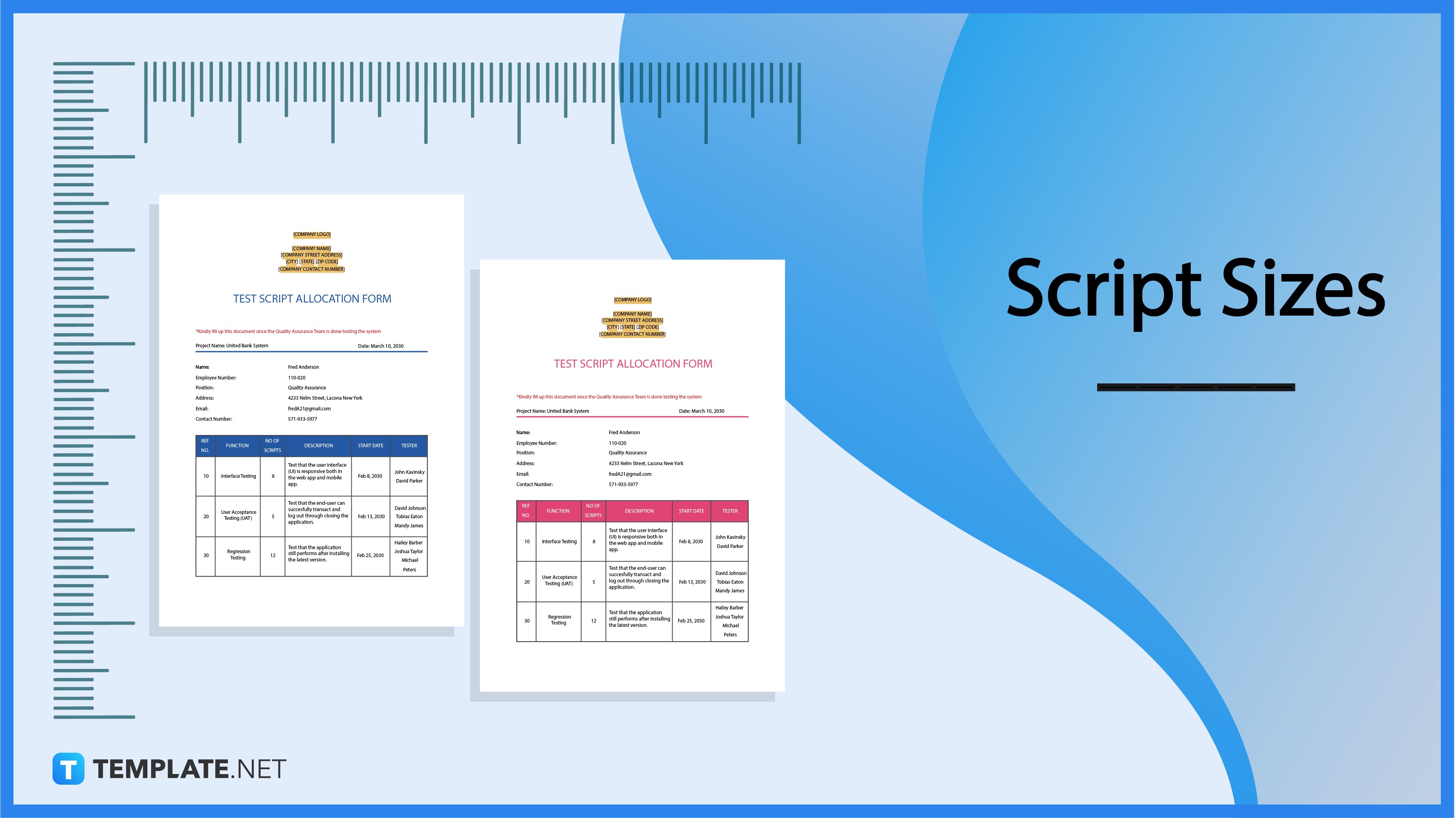
Script Sizes Standard
Script Paper Size
Scripts are normally written on US letter-size white paper, which measures 8.5 inches x 11 inches (215.9 x 279.4 mm, or 21.59 x 27.94 cm), according to the standard for writing scripts. An A4 paper size (8.3 inches by 11.7 inches, 21.082 x 29.718 cm, or 210.82 x 297.18 mm) and US legal size (8.5 x 14 inches, 215.9 x 355.6 mm, or 21.59 x 35.56 cm) will also do just fine for creating scripts.
Script Font Size
Content in scripts should be typed in Courier font of 12 pt size. With a few exceptions, your lines should all be single-spaced.
Script Margin Size
A play, film, or video script is a framework that includes language, visual, audio, and behavioral elements. It adheres to the standard formatting guidelines for page margins, which call for a margin of around 1.5 inches on the left and 1 inch on the right, top, and bottom of the page.
Script Line Size
No matter the paper size, an average of 55 lines per page is ideal when creating scripts. This does not include any spaces or the page number.
Script Sizes for Digital
A script can be the written content that anyone can post on any digital medium, including Facebook, Instagram, Twitter, LinkedIn, and so on. You may record voiceovers for podcasts and videos using your script, and you can also use it to create the text for your posters or templates. The suggested standard sizes for script templates on desktop and mobile are 820 pixels x 312 pixels, 640 pixels x 360 pixels, 900 pixels x 450 pixels, or 1080 pixels x 1080 pixels.
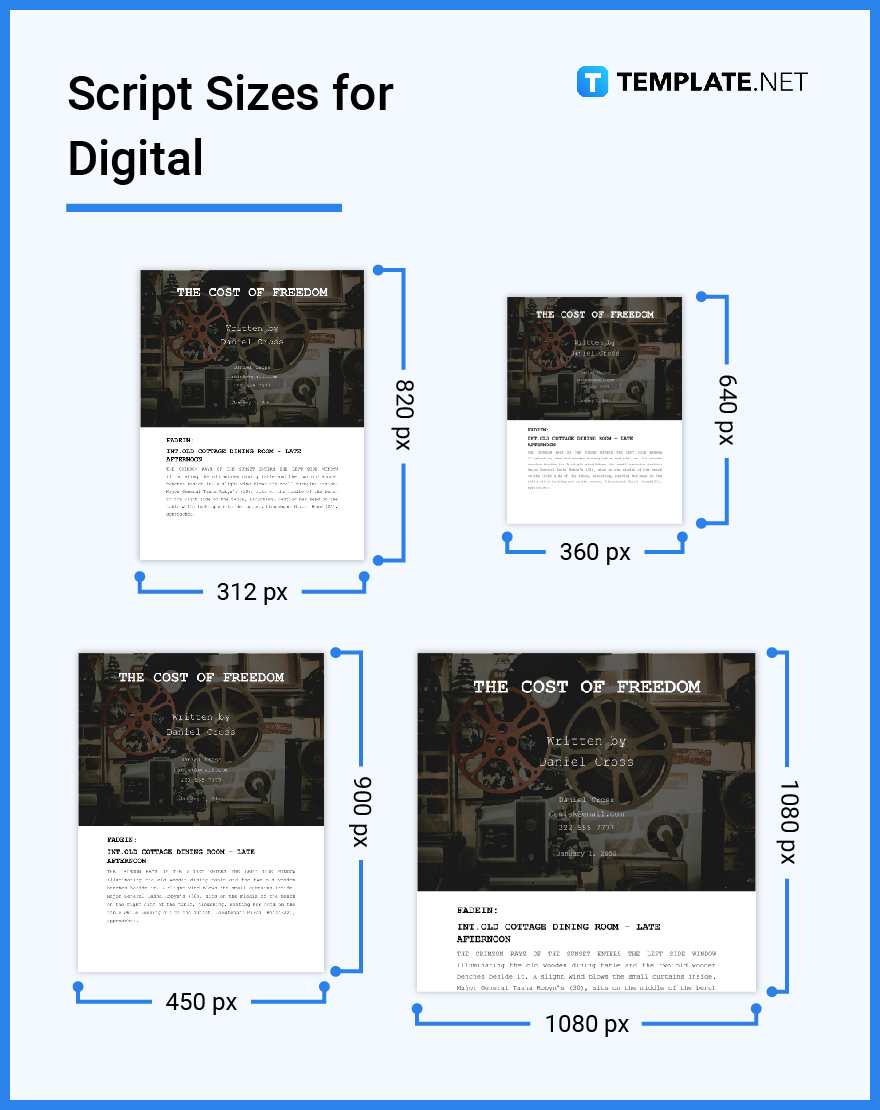
Script Sizes for Print
Printing your scripts will help them come to life. For theater organizations, production businesses, and those working in the TV, radio, and film industries, online and professional templates for script printing and binding services are appropriate and popular. The typical sizes of US letter (8.5 by 11 inches), US legal (8.5 by 14 inches), and A4 (8.3 by 11.7 inches) are ideal for printing scripts.
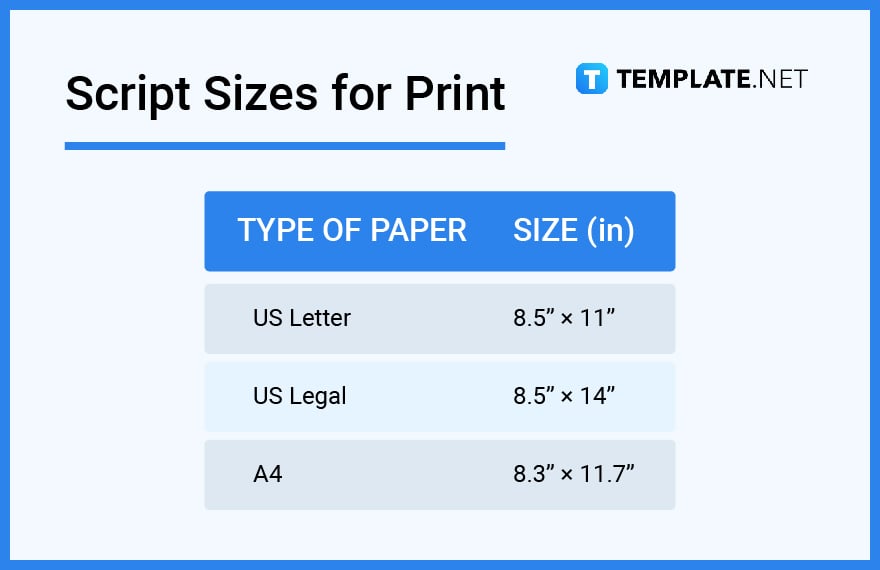
Script Sizes for Email
Script size is constrained, even if you’re using modern online email software. While Outlook only permits 10 MB, Gmail allows emails to be up to 25 MB in size, including the script’s content and any attachments. They will immediately offer assistance and recommend alternatives when you send messages using these platforms, such as using OneDrive for Outlook and Google Drive for Gmail attachments.

Script Sizes for Business
Business scripts are written and structured files that are frequently used in telemarketing and sales. An excellent script is the cornerstone of a successful sale that can result in a very lucrative business venture and also allow you to gauge quality regardless of the knowledge and abilities of your personnel. Understanding the fundamentals of using scripts, particularly the appropriate usage of US letter (8.5 by 11 inches), US legal (8.5 by 14 inches), and A4 (8.3 by 11.7 inches) sizes, will undoubtedly be a positive step.
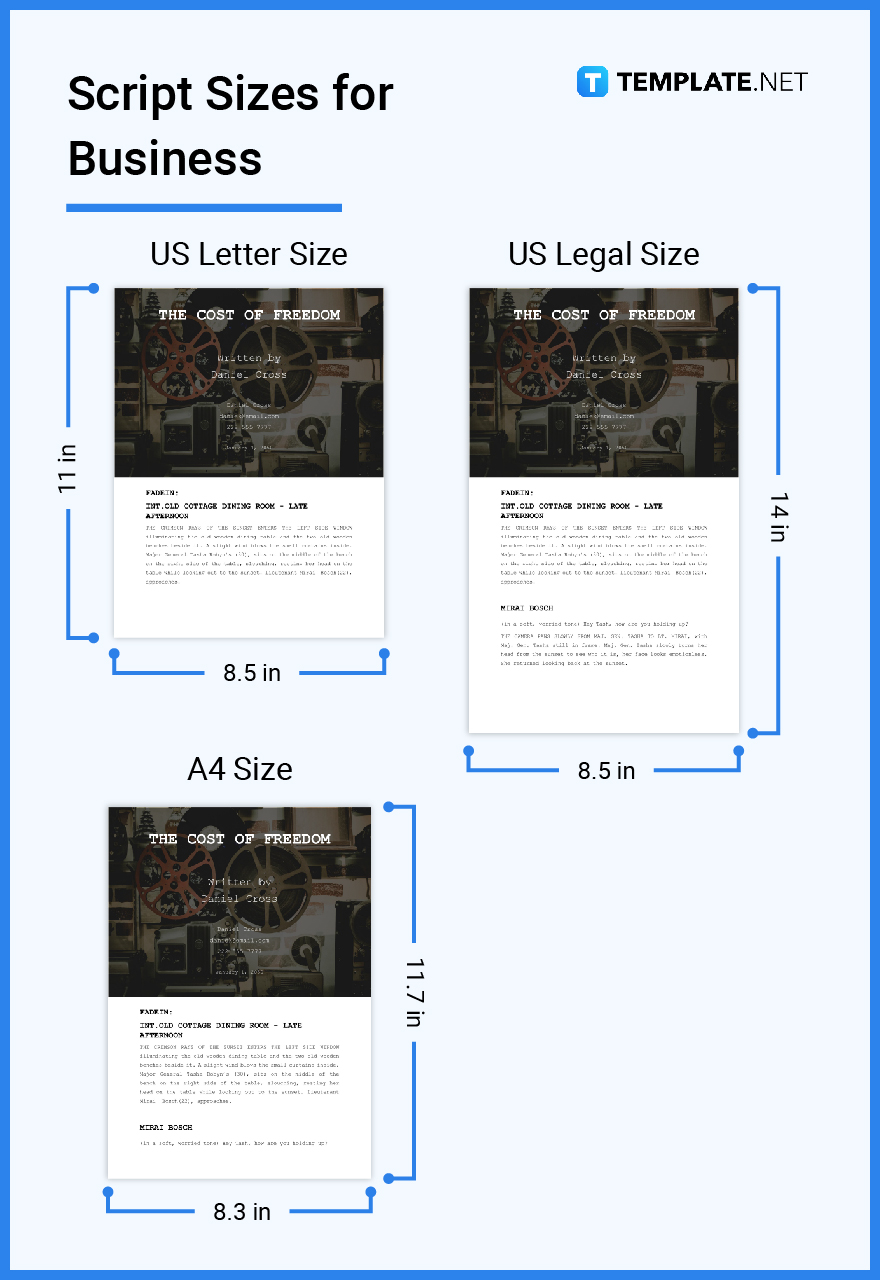
Script Sizes for Adobe Photoshop
Scriptwriting is a difficult craft, and the market competitiveness in the entertainment sector makes it even more difficult. However, if you are enthusiastic about writing and narrative, you shouldn’t let that stop you because there are many tools available, including Adobe Photoshop, that you may utilize to compose a script. You may easily modify or create script templates in the standard US letter size (215.9 x 279.4 mm, or 21.59 x 27.94 cm), A4 size (21.082 x 29.718 cm, or 210.82 x 297.18 mm), and US legal size (215.9 x 355.6 mm, or 21.59 x 35.56 cm) using this well-liked editor and graphics program that includes capabilities similar to Adobe Illustrator.
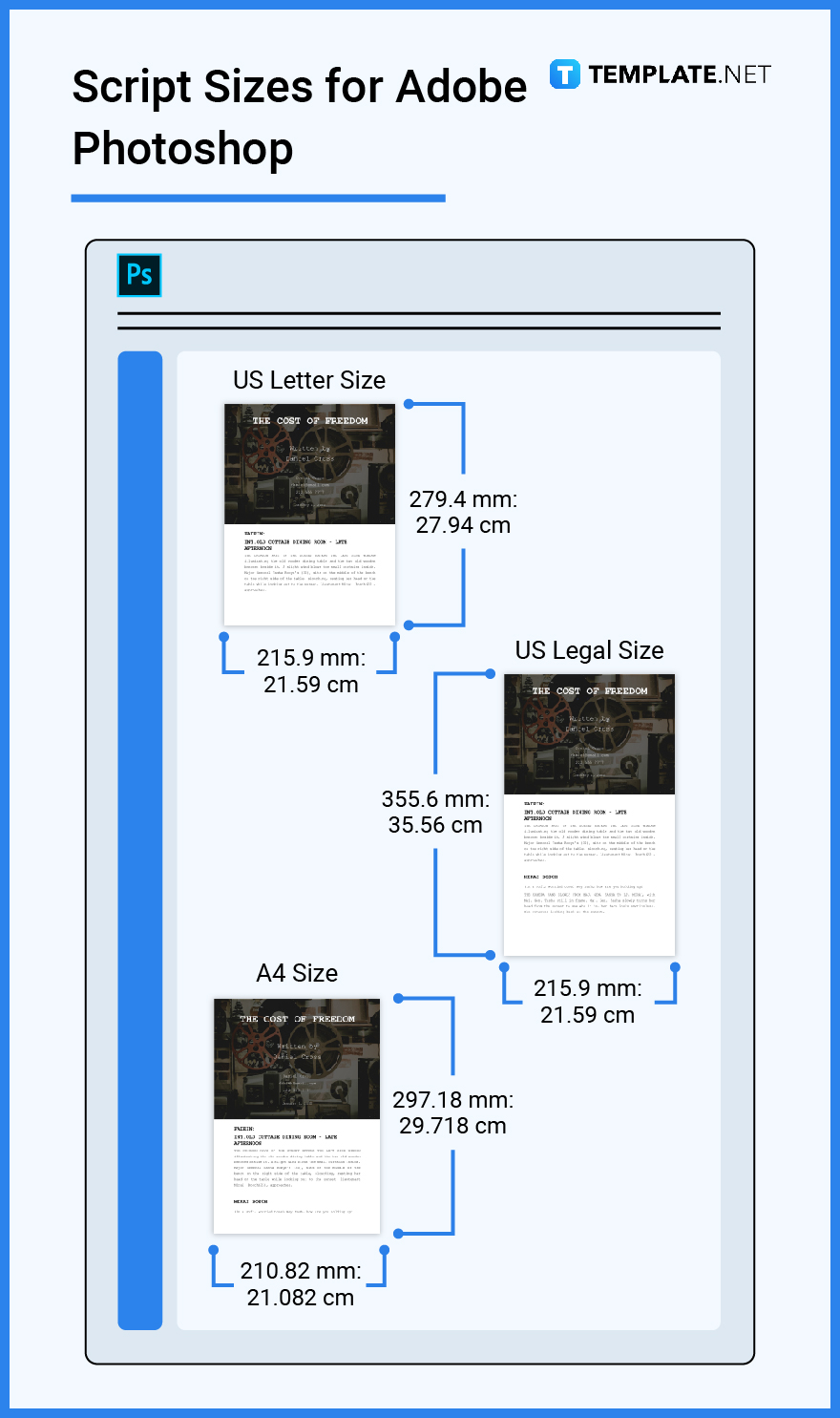
Script Sizes for Adobe Illustrator
A script is a crucial component of any production, whether it be a film, television show, or stage play, and if you don’t want to write your script using the popular Adobe Photoshop program, Adobe Illustrator is a fantastic alternative. The various acts, scenes, and lines of dialogue in a script can be written and formatted using this well-known online editor and visual tool. Just be sure to type and print your script in accordance with the industry-recognized script sizes, which include US letter size (8.5 x 11 in), US legal size (8.5 x 14 in), and A4 size (8.3 x 11.7 in).
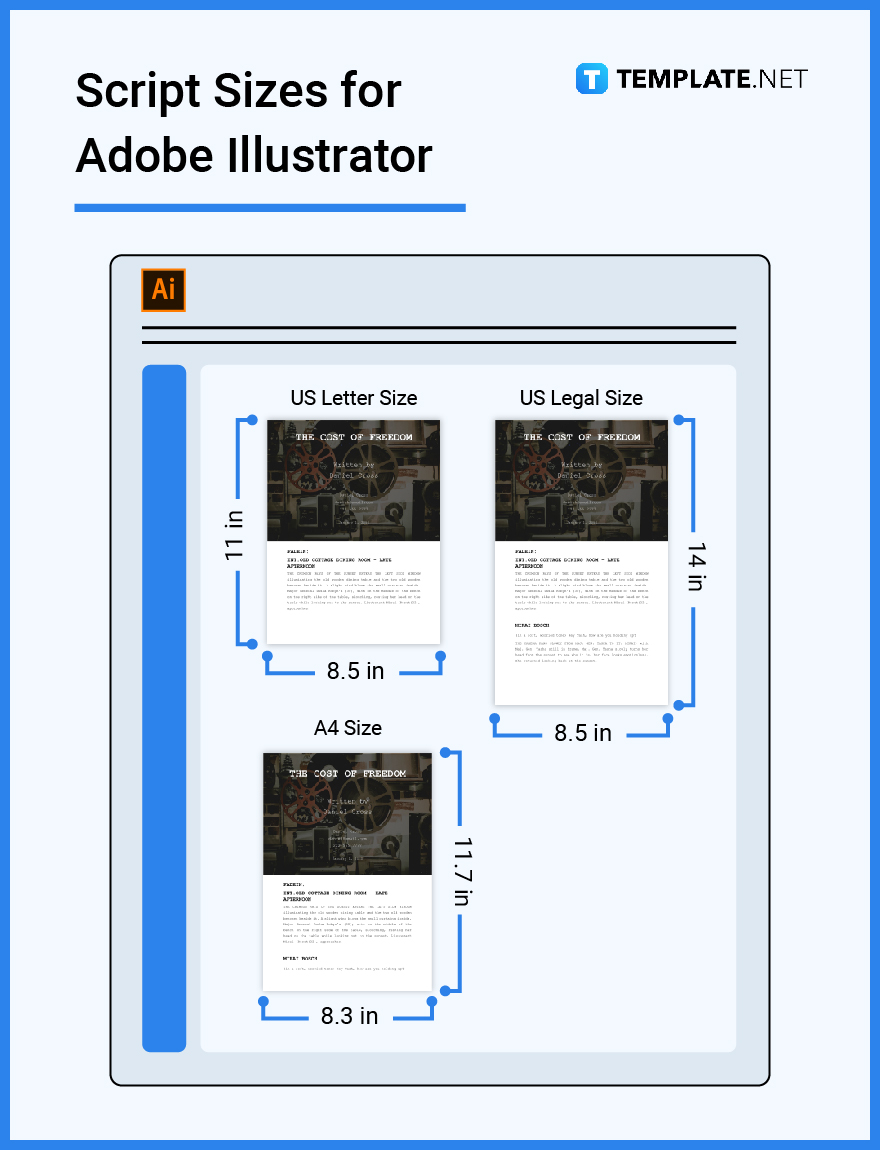
Script Sizes FAQs
How do I change the size of a script?
To change the paper size of a script in Microsoft Word, click the Layout option, select Size, and then choose your preferred paper size from the list, which includes US letter, legal, and A4 sizes.
What is the standard font size for scripts?
The standard font size for scripts is Courier 12 pt.
What is the ideal length of a script?
The ideal length of a script should have a page count of between 100 and 120.
What size font should a screenplay script be?
A screenplay script should have a font size of 12 points.
What size is script paper?
You can choose from the US letter (8.5 x 11 inches), US legal (8.5 x 14 inches), and A4 (8.3 x 11.7 inches) paper sizes for the script paper.
How do you margin a script?
Screenplays adhere to the following industry standards for margins: The top and bottom of every page should have a 1-inch margin, and the left margin should be 1.5 inches.
What are the measurements of a movie script on A4 lined paper?
The measurements of a movie script on A4 lined paper are 8.3 inches wide and 11.7 inches long.
How do you layout a script in Word?
To layout a script in Microsoft Word, an individual should set up the page margin, font size, and line spacing, creating a title page, indentation, and page numbers.
What are the dimensions of script paper?
The dimensions of script paper include 8.5 inches in width and 11 inches in height (US Letter), 8.5 inches in width and 14 inches in height (US Legal), and 8.3 inches in width and 11.7 inches in height (A4).
How do I structure a screenplay?
Users typically adhere to this fundamental story structure for a screenplay’s beginning, middle, and finish, which are formed and paced by important aspects or situations, such as the setup, catalyst, narrative point one, midpoint, despair, redemption, and end.






